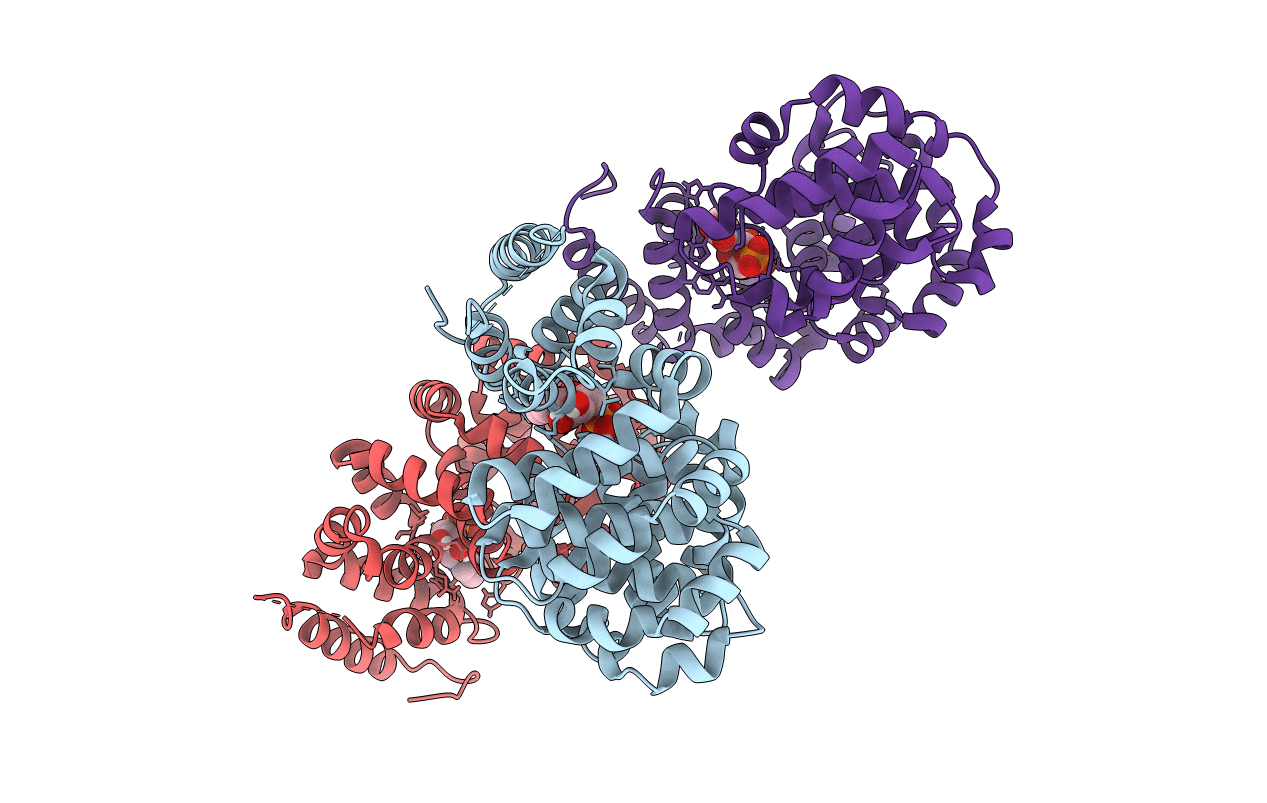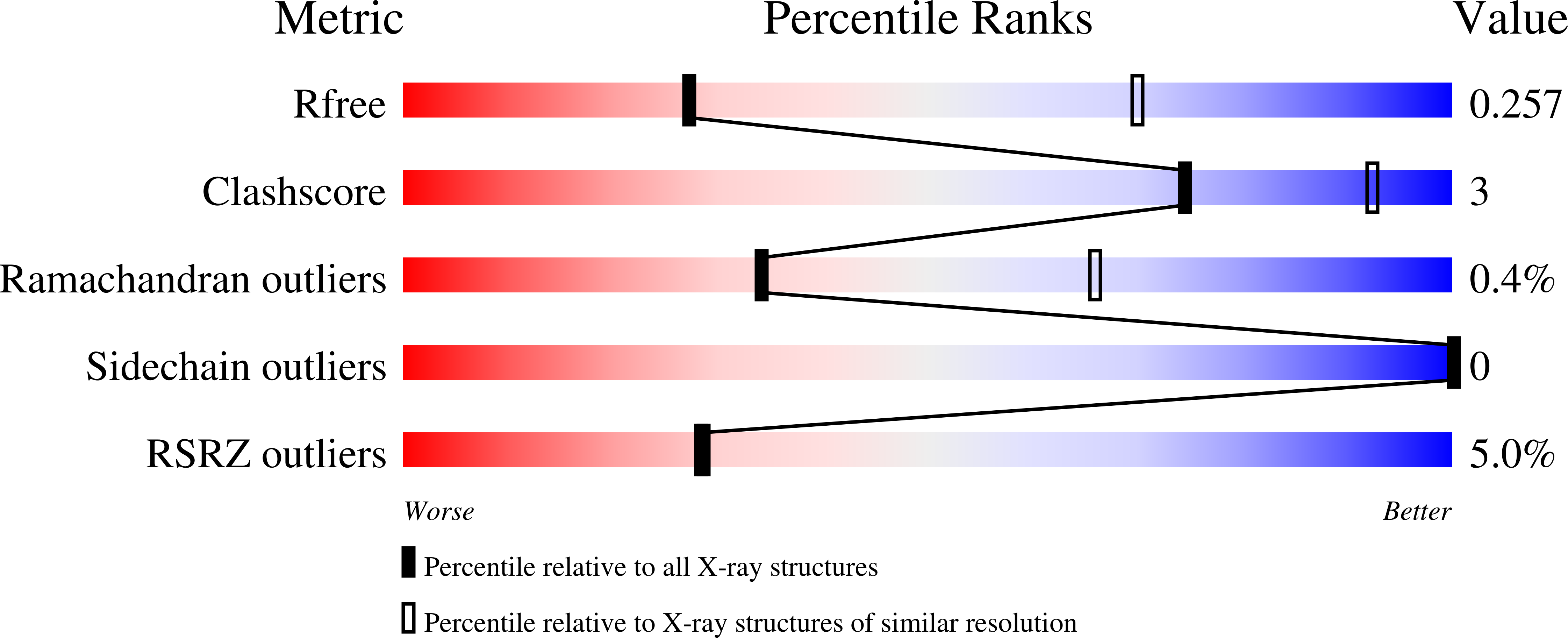
Deposition Date
2021-08-13
Release Date
2021-09-01
Last Version Date
2024-10-23
Entry Detail
PDB ID:
7RTC
Keywords:
Title:
Crystal structure of the ARM domain from Drosophila SARM1 in complex with NaMN
Biological Source:
Source Organism:
Drosophila melanogaster (Taxon ID: 7227)
Host Organism:
Method Details:
Experimental Method:
Resolution:
3.31 Å
R-Value Free:
0.25
R-Value Work:
0.23
R-Value Observed:
0.23
Space Group:
P 1 21 1


